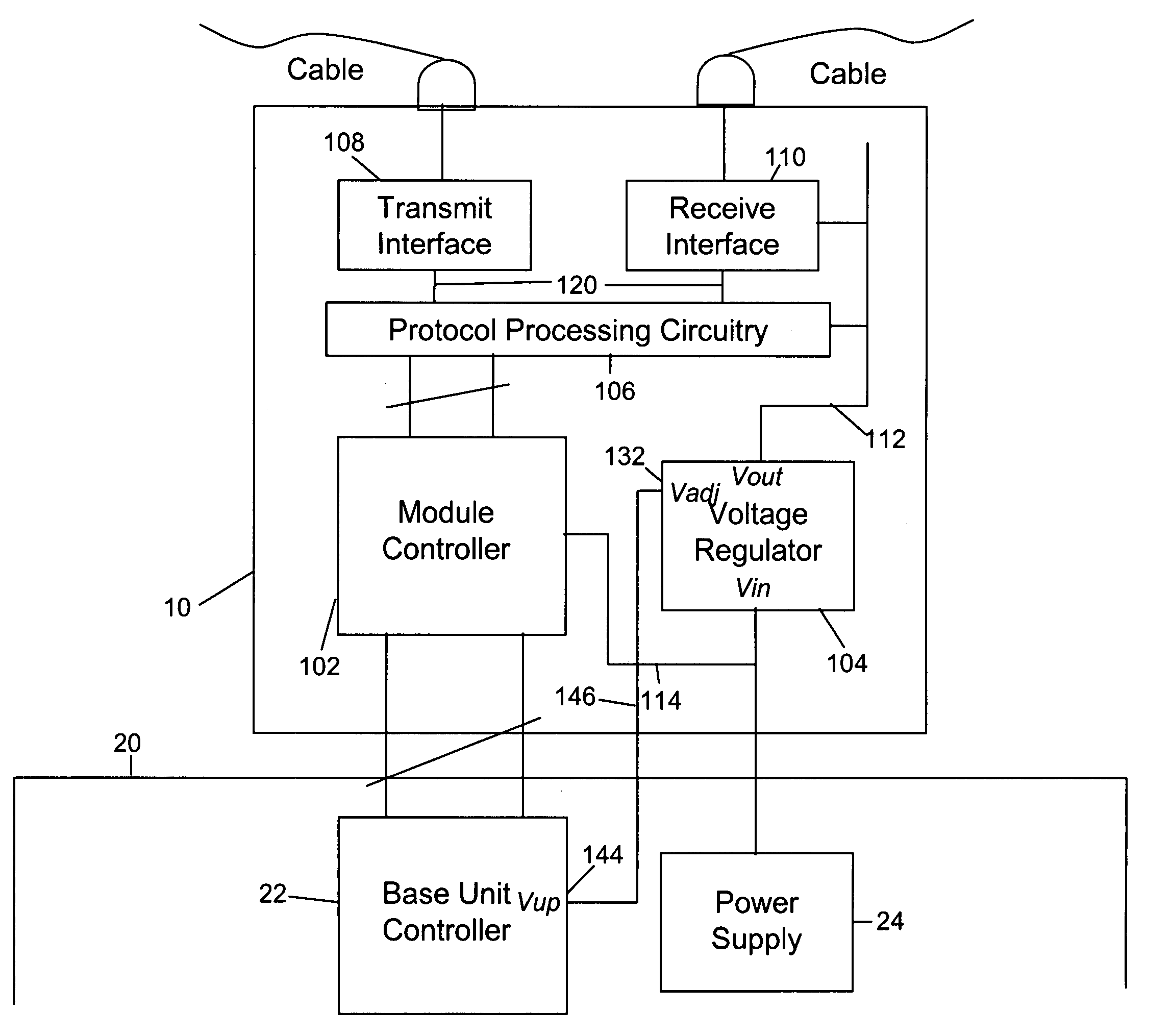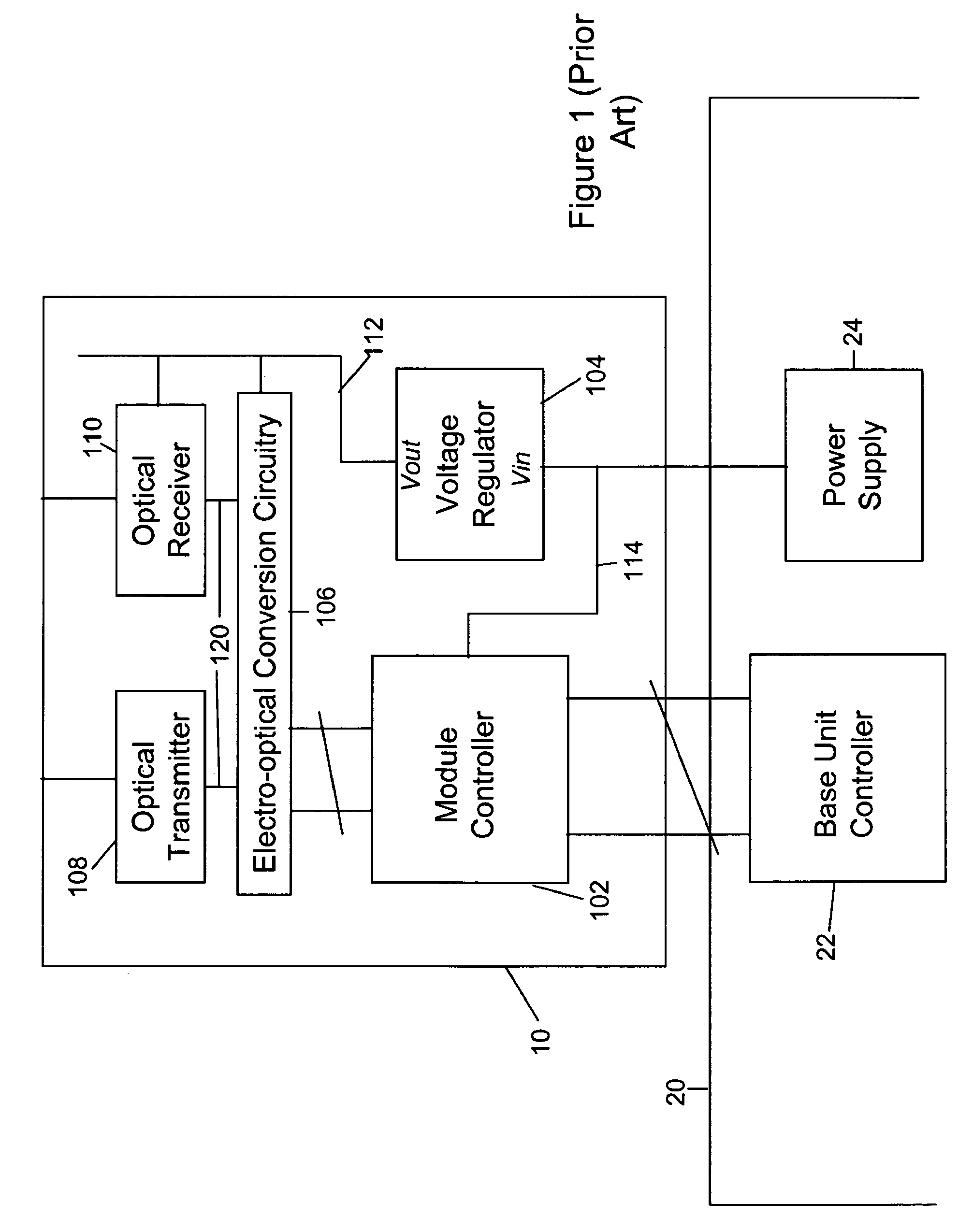Pluggable transceiver module
a transceiver module and module technology, applied in the field of pluggable transceivers, can solve the problems of affecting the operation of the base unit, the power supply of the board or the module connected to the unit, and the inability to properly design, so as to prevent damage to components within the module, the effect of controlling in-rush current more effectively
- Summary
- Abstract
- Description
- Claims
- Application Information
AI Technical Summary
Benefits of technology
Problems solved by technology
Method used
Image
Examples
Embodiment Construction
[0032]For the purposes of understanding the embodiments of the invention to be described, it will be helpful first of all to describe a conventional prior art pluggable module, to which the invention may be applied.
[0033]With the above in mind, FIG. 1 is a block diagram of a prior art conventional pluggable module. Embodiments of the invention to be described particularly relate to pluggable electrical or optical transceiver modules, being modules which are releasably connectable to a router or switch in a communications network. Optical transceivers include electro-optical conversion devices (such as lasers and photodiodes) in order to convert data to be transmitted over the communications network between the electrical and optical domains to allow transmission over an optical fiber.
[0034]As shown in FIG. 1, a pluggable optical module 10 comprises a module controller 102 which would typically be a microprocessor. Additionally provided is a voltage regulator 104, which receives a su...
PUM
 Login to View More
Login to View More Abstract
Description
Claims
Application Information
 Login to View More
Login to View More - R&D
- Intellectual Property
- Life Sciences
- Materials
- Tech Scout
- Unparalleled Data Quality
- Higher Quality Content
- 60% Fewer Hallucinations
Browse by: Latest US Patents, China's latest patents, Technical Efficacy Thesaurus, Application Domain, Technology Topic, Popular Technical Reports.
© 2025 PatSnap. All rights reserved.Legal|Privacy policy|Modern Slavery Act Transparency Statement|Sitemap|About US| Contact US: help@patsnap.com



